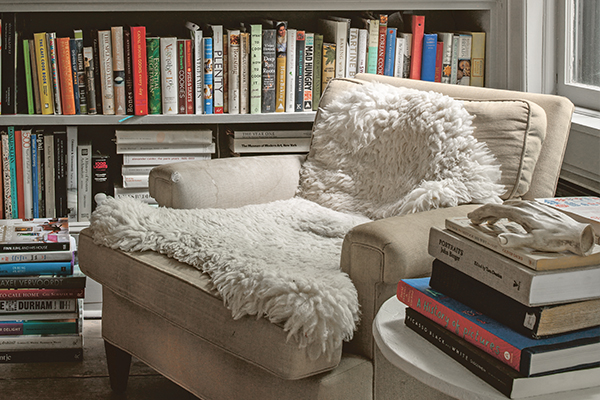Start your meditation journey with Caitlin Cady
23 Apr 2020 | Caitlin Cady
This book is for you if you:
- Have a good sense of humour and can get down with puns, the occasional dad joke, and a well-placed dirty word
- Are a recovering (or active) people-pleaser or perfectionist
- Are ready to say sayonara to stress, self-judgement, destructive habits, controlling tendencies, compulsions or obsessive behaviours
- Want to calm down, feel more joy in your days and sleep better at night
- Desire improved focus, supercharged creativity, deep reserves of patience and a sense of contentment
- Are ready to upgrade the quality of your life and live to your highest potential.
Getting Started: Meditation Doesn’t Have To Suck
“Meditation doesn’t have to suck. For real.”
As I discovered when I was getting started, there’s a fair amount of meditation misinformation circulating these days. So let’s clear some things up straight away. Meditation isn’t religious. It’s not complicated. You don’t have to drop a thousand bucks to learn how to do it. You don’t have to stop thinking. Levitation is not required. You don’t have to go on a silent retreat. It doesn’t take hours out of your day. There’s definitely more than one way to do it. And despite the very convincing evidence you’ve uncovered on the interwebs, meditation doesn’t have to be boring as shit or narrated by an annoying loooong draaaaawn ouuuuut meditation voice. In other words, meditation doesn’t have to suck. For real.
I’m gonna give it to you straight: getting frustrated or overwhelmed and saying ‘F this’ is the most common experience people have when they first try meditation. If this has been your experience thus far, you’re not alone, my friend.
When I was first trying to learn to meditate, I was advised by many well-meaning people to, you know, just sit there and ‘practise mindfulness’ or ‘watch my thoughts’ or ‘observe a candle flickering’ (yes, seriously) for X minutes per day, every day. That kind of wishy-washy advice left me fumbling around in the dark trying to assemble something I’d never seen before with no instruction manual.
While meditation is pretty magical, figuring out how it works doesn’t need to be a mystery. It ain’t always easy, but it ain’t complicated either.
Let’s start with the foundations of the book.
Come As You Are
Here’s the good news. There is no set starting point, no prerequisite and no qualification required to start meditating. No fancy apps, special clothing or expensive training needed. A cushion and a quiet place to sit are handy, but the truth is, once you know the drill, you can meditate anytime, anywhere.
Other things you don’t need: a quiet mind, a wide-open schedule, or even a room with a door. In fact, meditation invites us to show up, just as we are. That means accepting that you have just 10 minutes a day to practise, or that you only have three mornings a week without your kids, or that you travel for work. This is not the time to put pressure on yourself, try to do it perfectly, or wait for the perfect circumstances. Do what you can, and the rest will follow—trust me.
A Practice Of Your Own
Whatever your circumstances are, I’ll give you the tools, techniques and tactics to design a meditation practice of your very own. Not a practice that you do because you heard it was good for you. Not a practice you do because you think you ‘should’. A practice you do to thrive and live to your highest potential.
I Made You A Mix Tape
This book does not offer a one-size-fits-all approach. It also doesn’t include an exhaustive curriculum on every kind of meditation known to man, and I’m not going to sell you on one style of meditation. Instead, think of it more like a meditation mix tape. Like any good mix tape, it’s going to take you on a journey. We’ll cover five fundamental meditation techniques: breath, sensation, sound, mantra and visualisation. We’ll go over a few of the benefits, like less stress and anxiety, better sleep, more resilience, heightened intuition and even that elusive pot of gold at the end of the self-improvement rainbow … more happiness. We’ll talk technique and we’ll get our worksheet on. Most importantly, we’ll sample the goods and take a few different meditations for a spin to see what feels best for you. In doing so, you’ll find your Gateway Meditation—the technique that gives you a taste of something you crave and gets you totally hooked on the practice.
What’s The Why?
Understanding the practical nuts and bolts of meditation is essential, but how do you create a practice you can stick to? You’ve got to know why you’re doing it: a clear, specific, personal reason. Because if your reason for meditating is wishy-washy and vague, your efforts and your outcomes will be, too. I’ll help you discover your motivation for meditation and create your own Meditation Manifesto.
Goal Digger
I’m not going to tell you how much or how often to meditate. Following someone else’s prescription is the quickest way for a practice to get shelved. Instead, I’ll help you set some goals that suit you and your lifestyle, and show you how to write your own personal Meditation Prescription so you can create a habit worth sticking to. ’Cause when you get a script for the good shit, it’s all about the unlimited refills.
What to expect
By the end of this book, you’ll know …
- What meditation is
- How to deal with your thoughts
- Five fundamental meditation techniques
- Where and how to sit
- Optimal times of day for meditation
- The benefits of meditation
- How to evaluate and measure your practice
- Your meditation goals
- How to upgrade your practice from a habit to a ritual
- Plus you’ll discover your Gateway Meditation, your Meditation Manifesto and your personalised Meditation Prescription.
Try a Worksheet to get you started on your journey.
Scientists report that humans average somewhere between 12,000 and 70,000 thoughts per day. But you don’t need a dude in a lab coat to tell you that. Just spend a minute eavesdropping on your thoughts, and you’ll get the gist.
Seriously, count your thoughts for 60 seconds. Try it. I dare you.
This is an edited extract from Heavily Meditated by Caitlin Cady
Available now in all good bookstores and online
Click here to find your preferred online retailer



